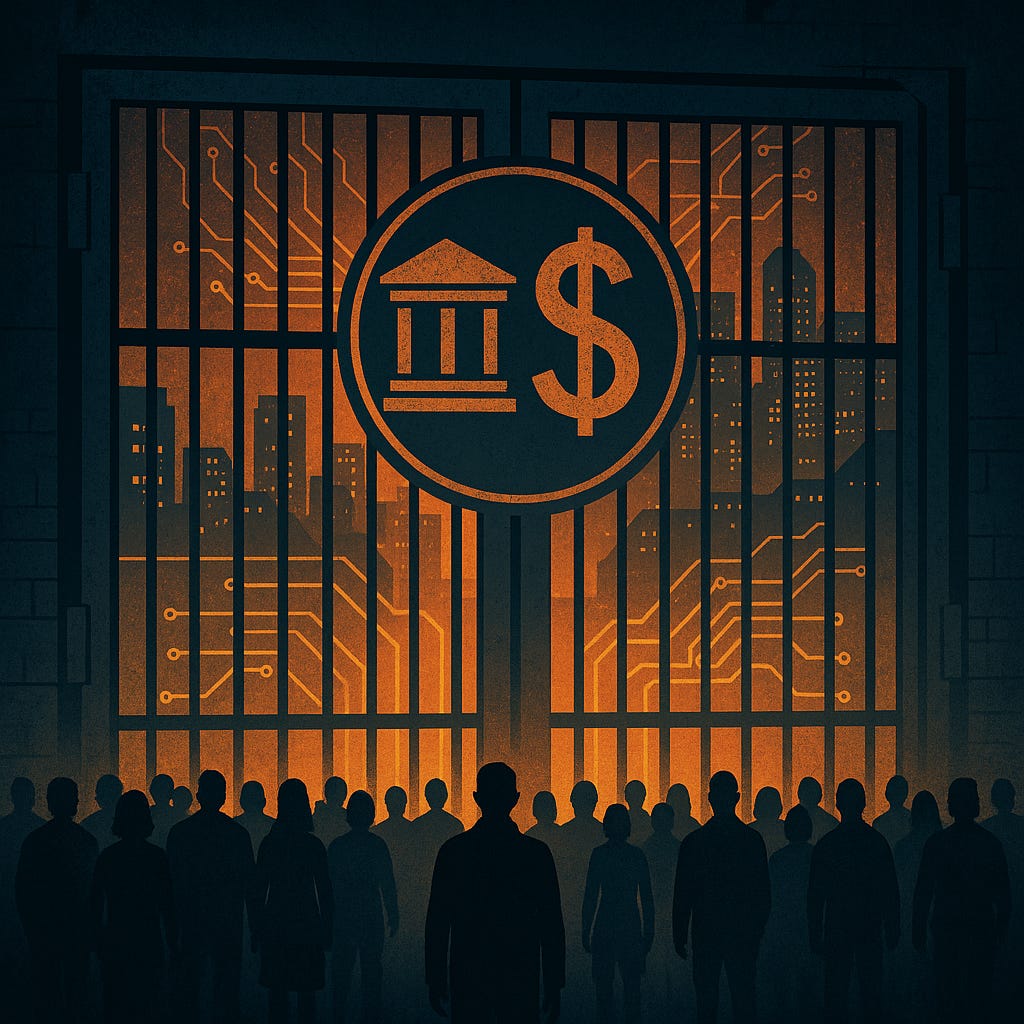The Two Invisible Walls
How selection and silence sustain the machinery of disappearance.
I. Preface — The Architecture Beneath the Surface
Every system of control begins with classification. It decides who counts, who is seen, and who may quietly vanish without record.
Beneath the visible enforcement apparatus of modern America lies a double architecture: a machine of selection and a jurisdiction of silence.
Together, they allow disappearance to occur inside the law’s own shadow.
Let us take them in turn, using verified structural knowledge rather than speculation.
II. The First Wall — The Logic of Selection
In the age of digital government, a person’s life is translated into a mosaic of data points.
Modern enforcement does not begin with suspicion on a street; it begins with a search query in a federal database.
How the “Disappeared” Are Being Selected
The current deportation and detention network operates through a fusion of federal and contractor-run data systems.
Palantir Technologies, long embedded within ICE and DHS, provides the digital backbone for identifying and tracking non-citizens.
Integrated systems: Palantir’s Investigative Case Management (ICM) and FALCON programs combine records from DMVs, court systems, social-service registries, and open-source intelligence.
These systems link individuals through relational inference—addresses, family ties, employment history, school enrollment, even social-media metadata.Targeting: ICE’s Targeting Operations Division uses these integrated datasets to generate priority lists scored by criteria such as visa expiration, prior contact with law enforcement, and proximity to known ICE operations.
Private-sector feed: Contractors such as LexisNexis Risk Solutions supply address and phone data in real time. When migrants use CBP Home or related portals, their self-reported data are ingested into this ecosystem, confirming location and family composition.
Result: The “failure” of the app to follow through may not be failure at all; it may serve as a collection mechanism—a digital census of the undocumented population that can be weaponized by enforcement teams.
When agents arrive at a door, they already know who lives there because the residents told them.
The system is triaging by data confidence, not moral criteria.
Those who volunteer information become the lowest-risk enforcement targets: confirmed, trackable, and legally vulnerable.
III. The Second Wall — The Jurisdiction of Silence
If the first wall decides who, the second wall decides who may question it.
It is built from law, procedure, and political restraint.
1. Federal Pre-emption
Immigration enforcement resides within the federal domain. Supreme Court precedent confirms that states cannot obstruct federal officers executing immigration statutes.
Even sanctuary jurisdictions remain bound by information-sharing protocols.
The constitutional balance tilts decisively toward federal discretion.
2. Administrative Invisibility
Most removals proceed under civil authority rather than criminal indictment.
Without case numbers or indictments, there is little for state courts to contest.
This procedural invisibility creates a gap between moral outrage and legal jurisdiction: a governor may protest, but the paperwork remains lawful.
3. Economic Leverage
Federal funding mechanisms link cooperation to survival. A state that resists risks suspension of grants for housing, policing, or disaster relief.
Financial compliance becomes the quiet enforcer of political silence.
4. The Dilemma of Conscience
Here lies the seed of a larger question:
What should state leaders do when the machinery of national enforcement appears to exceed constitutional or humanitarian bounds?
The text of the Constitution offers process; conscience demands something more.
Should a governor act as steward of the people’s welfare, even at the cost of federal reprisal?
Or does the preservation of union require endurance of injustice until lawful remedy can be restored?
These are not rhetorical questions—they are the living test of federalism itself.
IV. The Interlock — How the Walls Sustain Each Other
The two walls function in concert.
The machine of selection supplies targets faster than oversight can review them; the jurisdiction of silence ensures that oversight seldom tries.
Each disappearance validates the other’s necessity: the data proves efficiency, the law provides cover.
Together they form a closed circuit of accountability—one that operates legally while eroding legality’s spirit.
V. Between the Walls
For those caught inside, the distinction between legality and power dissolves.
They do not vanish because agents are cruel, but because the architecture leaves them no exit.
To resist is to challenge administrative order; to comply is to contribute to one’s own record of removal.
The result is a quiet normalization of absence.
VI. Vanishing Point
A nation is measured not by how it punishes, but by how it disappears.
When governance is mediated through data and distance, disappearance no longer requires secrecy—it requires indifference.
The challenge for every state, institution, and citizen is to decide whether silence is still obedience, or whether it has become complicity.
Recognition is the first form of resistance; naming the walls is how the line of sight begins to return.
Thank you for reading,
Robert J. Rei, October 17, 2025





Thank you for the book recommendation and thank you for your excellent article.
Palantir is doing what IBM did in Wotld War 2. Cataloging the list of people to be disappeared.